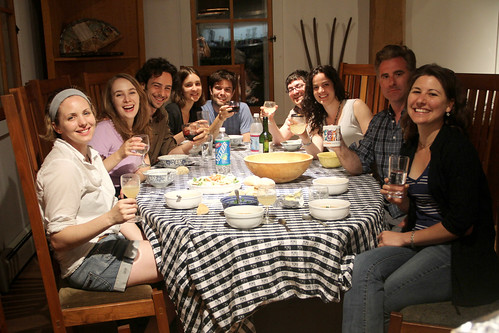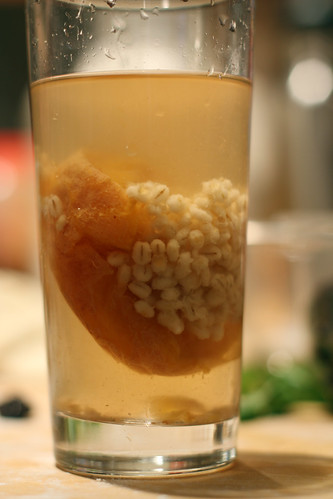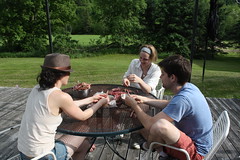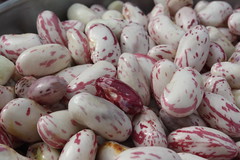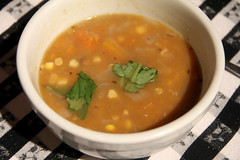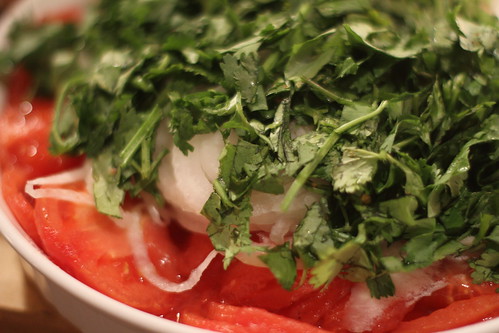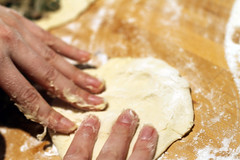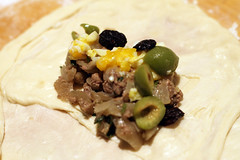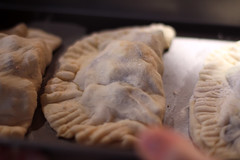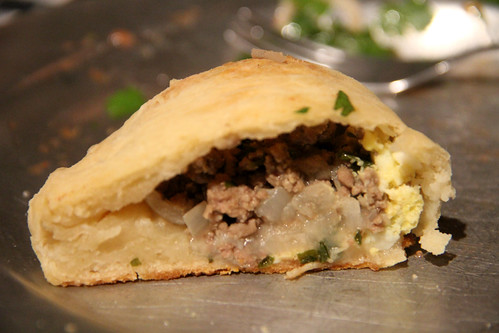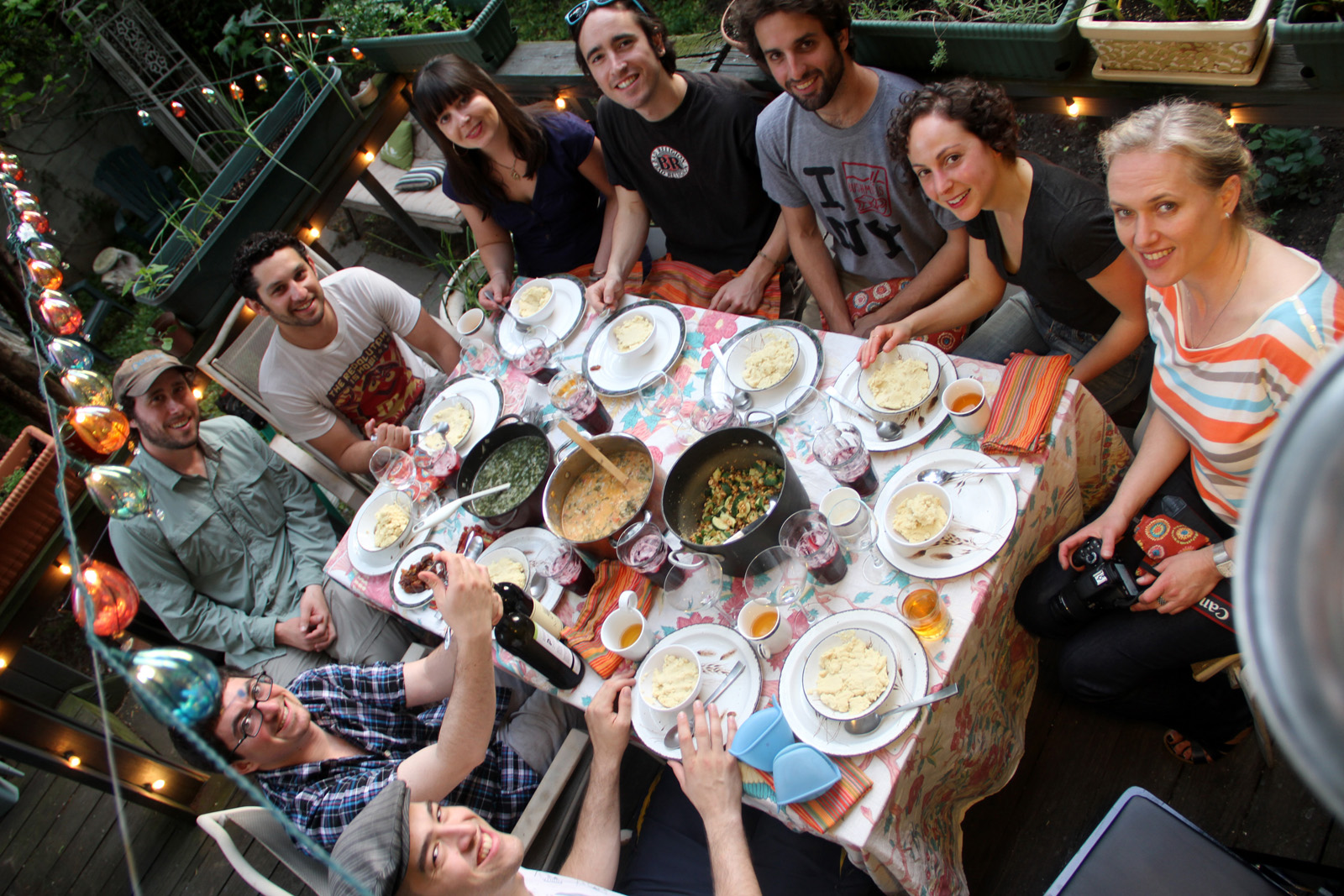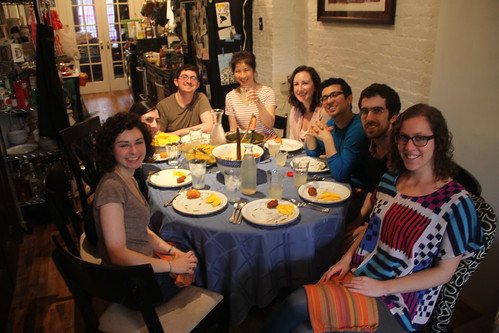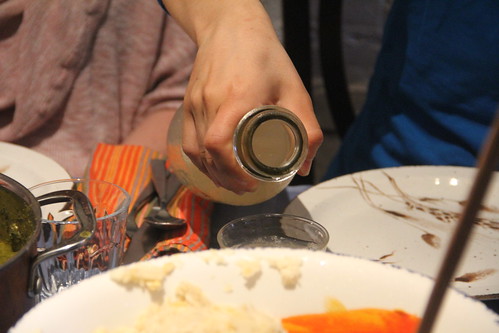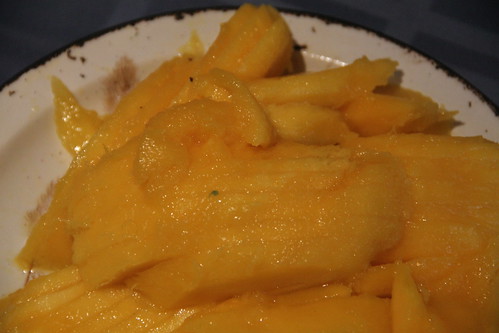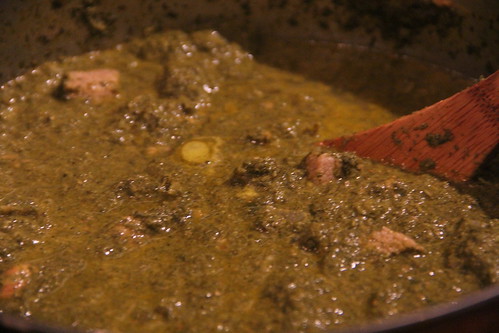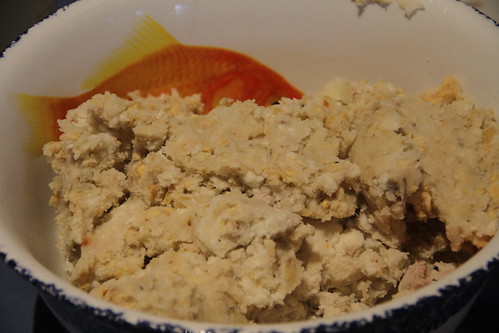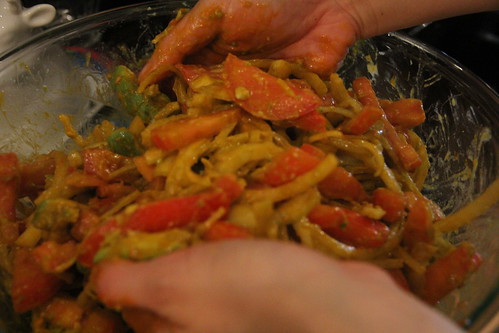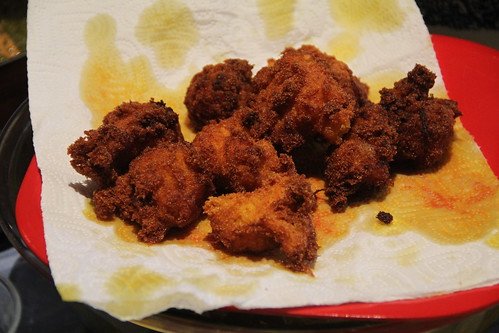With coasts on the Caribbean and Pacific, and a variety of lowlands, highlands, and valleys leading all the way to the Andes, there's plenty of regional variation in much of Colombia, expressed in both in music and food. But unlike for China, where we picked representative dishes from across the country, we took a different approach with a deep dive on a traditional meal from the Paisa Region. That's because the bandeja paisa is a traditional, unitary, and utterly abundant amalgam of a good dozen ingredients, famous across the country and region.
Cooking started the day before, and ended in a frenzy of last-minute prep. Our guests tonight included three out-of-towners: Carla and Kirk from LA, and Kelly from DC. Rounding out the table were Sophie, Kambui, Anna, Elsa, Mal, and Jim.
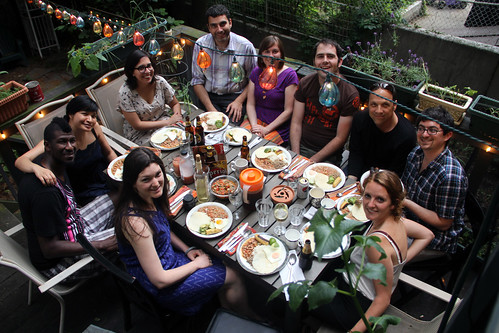
Chicharrones | Fried pork belly | Recipe
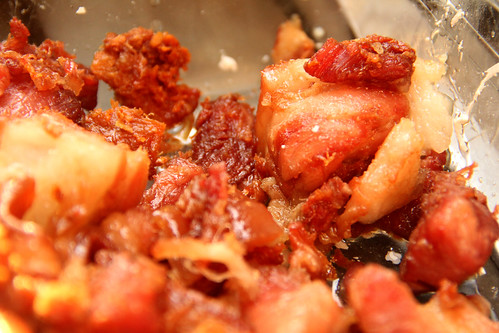
I have made a lot of rich things in the past year, but it's kind of hard to top fat fried in its own fat. You cook pork belly in water, which softens the meat and renders out a bunch of the fat; once the water's evaporated, the extracted fat becomes the medium for deep-frying what remains. Utterly crisptacular.
Chorizo | Spiced sausage | Recipe

This was a pretty darn good chorizo. iIf you ever find yourself in Sunset Park, La Vaquita on 5th Avenue will hook you up at a good price. But what's more notable is how after a few minutes, the grill turned into an inferno, with flames so big they were licking out the sides and threatening to melt the cables running along the outside of the building. (Note to self: turn down the grill after putting on fatty sausages!) The outside was fantastically seared while the inside wasn't yet cooked, but there was so much heat lingering after I turned off the heat that ten minutes with the lid down and it was cooked through. ¡Sabroso!
Arepas de queso | Corn and cheese griddle cakes | Recipe
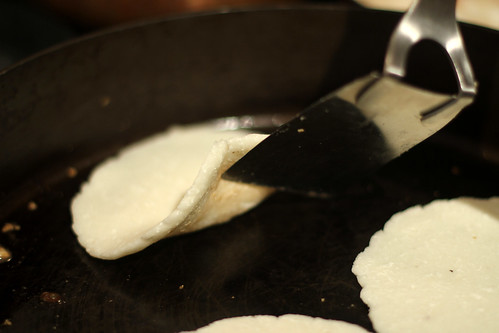
I'd never heard of arepas before moving to New York. Typical of Colombian and Venezuelan cuisine, they're a certain type of corn meal (nixtamalized and pre-cooked, I believe), mixed with warm water and butter, and in this case cheese. Smush 'em down, panfry 'em in more butter, and you've got a tasty treat. Not a bad idea to keep some arepa flour on hand, since this is a pretty easy-to-whip-up snack.
Plátanos horneados | Baked plantains
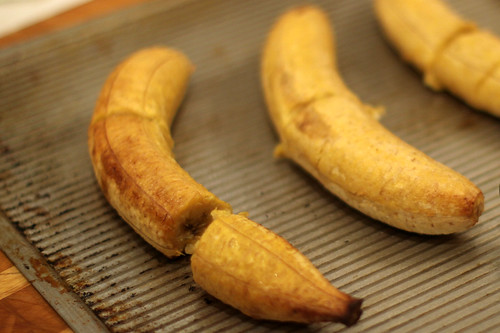
There's enough opportunities when cooking the world's cuisines to fry plantains that I jumped at the alternative of baking. Not only is the oil really rich and completely unnecessary on the same plate as the chicharrones, but it's also time consuming and annoying to fry all those slices. Baking plantains actually is really easy: cut and rip off the peels of the darkest, ripest plantains you can find, brush them with melted butter, and bake for about a half hour at 400 degrees. That's really it! Only regret is that I didn't buy more plantains.
Frijoles paisas | Pinto beans with pork and vegetables | Recipe
Though they were staring me in the face in the meat case at La Vaquita, I forgot to pick up ham hocks, and couldn't for the life of me find them anywhere local yesterday. So I substituted bacon, which is rarely a poor decision. In combination with the tomato-onion-cilantro mix thrown in toward the end, these beans were seriously tasty. The fact that I made them the day before surely helped, because the flavors were nicely blended and the texture very smooth.
Carne en polvo | Powdered beef | Recipe
Yep, powdered. Marinate some thinly sliced steak, simmer until done, then throw it in the food processor! Kind of a shame, I thought it tasted better as whole steak than ground to smithereens, but maybe it's an acquired taste.
Mazamorra | Hominy porridge | Recipe
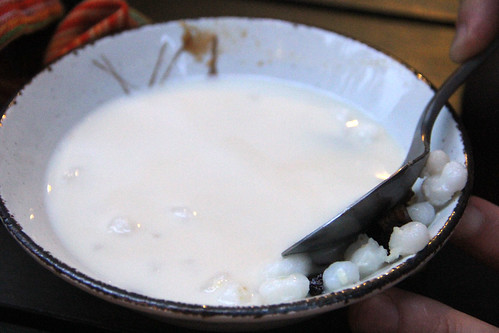
This is one of those dishes where I'm not sure if I did it wrong, or if it's just something that we simply didn't like all that much. Hominy from a can, simmered in water, and chilled, and then you add milk, chunks of sugar, and guava paste. The sugar chunks and guava paste didn't really dissolve, so there was a lot of smushing on the side of the bowl. Maybe we were supposed to eat (or drink?) the hominy-milk and then nibble on the sugar and guava paste? Hm.
Chocolate caliente | Hot chocolate | Recipe
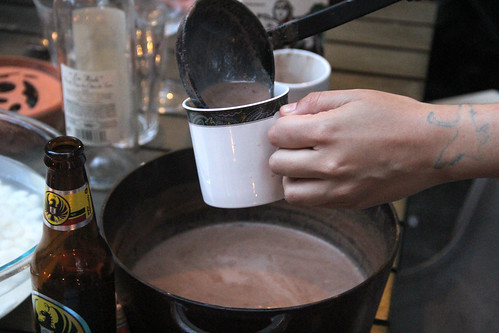
The hot chocolate, on the other hand, was a surefire winner. Get bars of chocolate specifically made for the purpose, with a higher sugar content and without milk. Melt in the pan with a bit of milk, then add more milk until it's drinking temperature. Very fortunately, I bought too much chocolate so we'll be having this again soon.
Though we dined outside, throughout the evening we played a big long playlist of Colombian music, which features a ton of variety, from cumbias to Shakira, reggaeton to waltzes. Can't wait for our Jambox to arrive, so we can enjoy more music outside.
This was our last Nosh in Brooklyn for over a month! In two weeks we'll be in the Bay Area for a meal from the islands of Comoros, which are north of Madagascar. That'll be quite the shift!
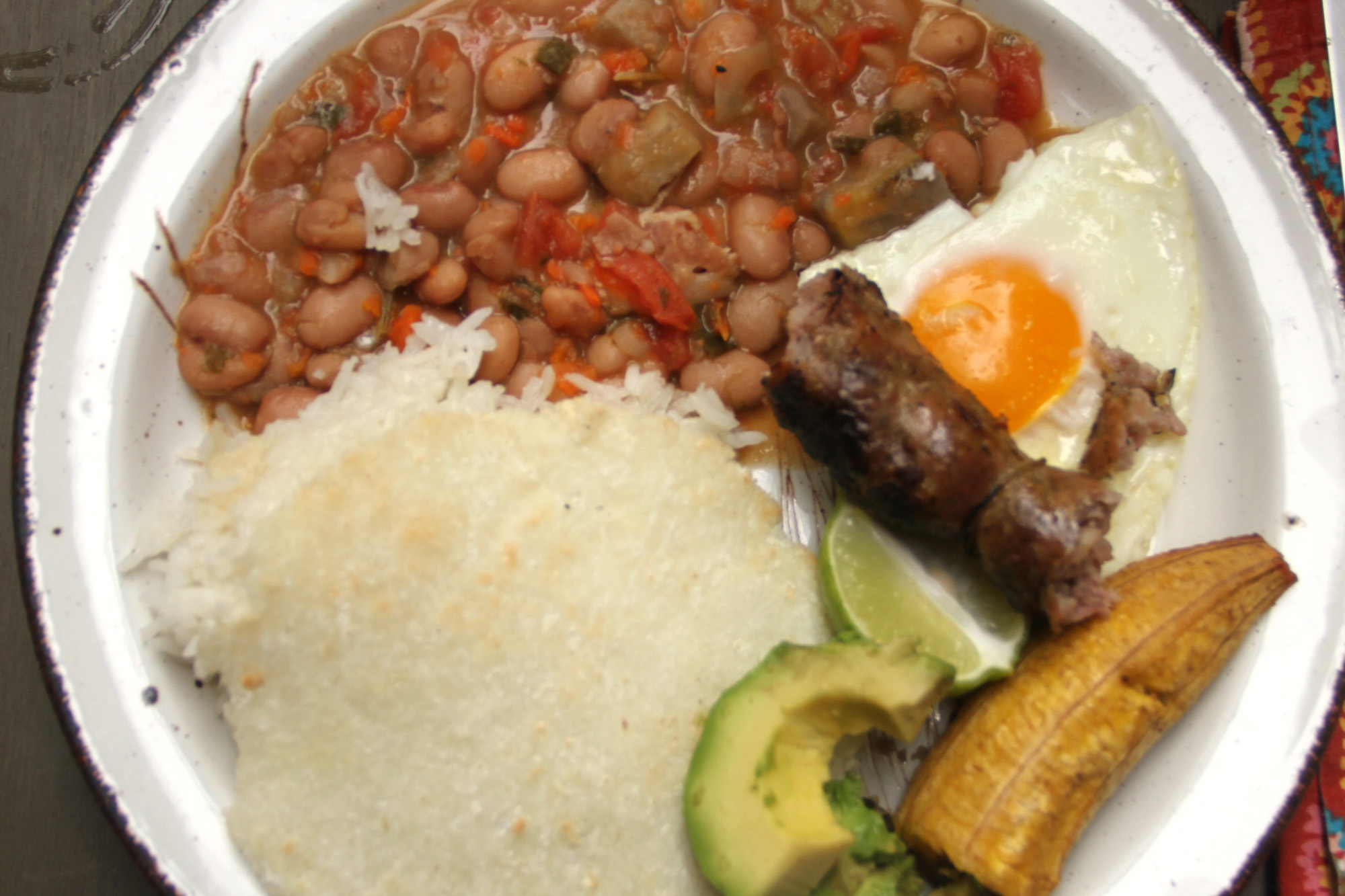
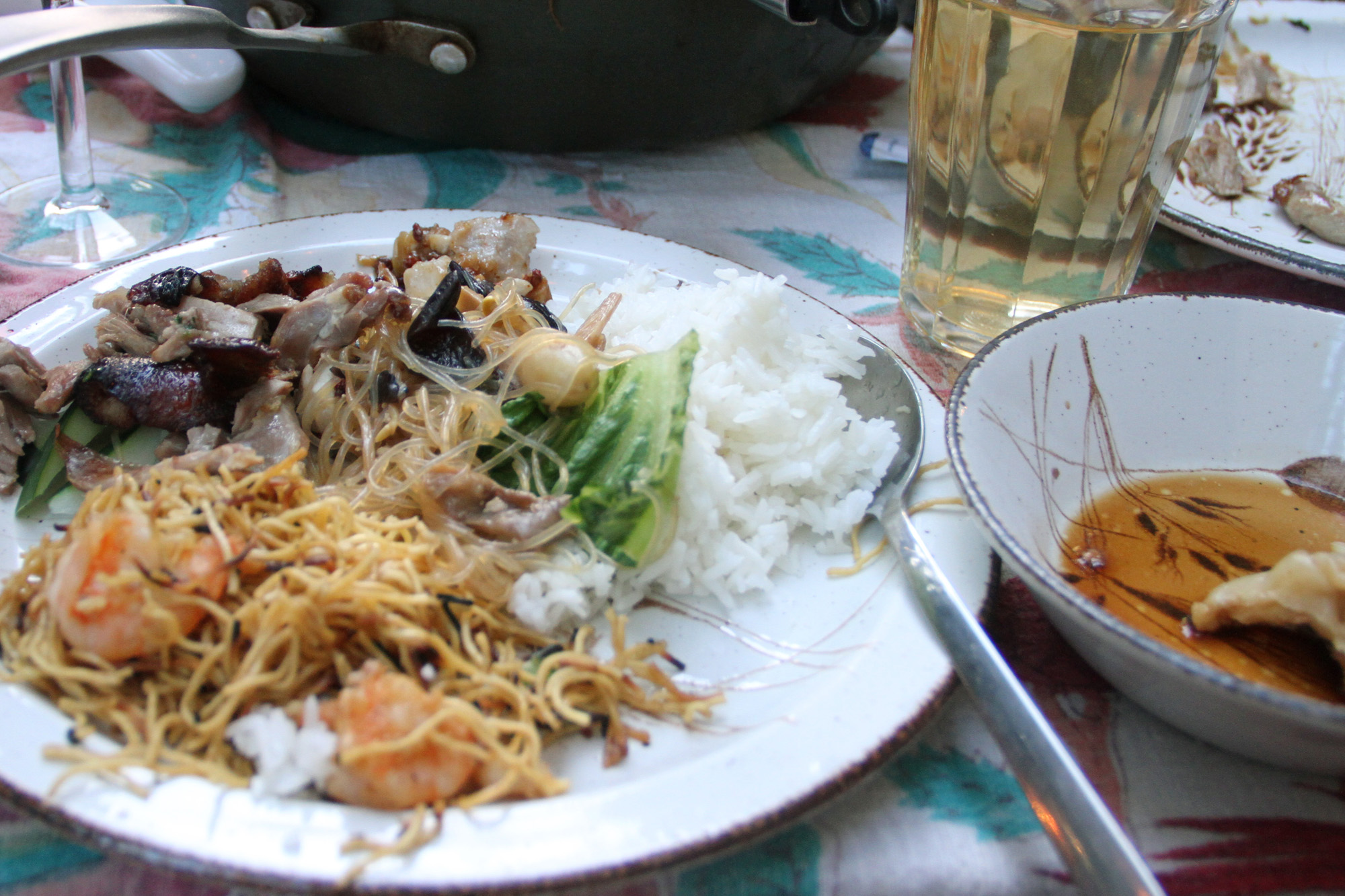

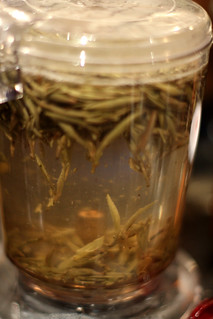
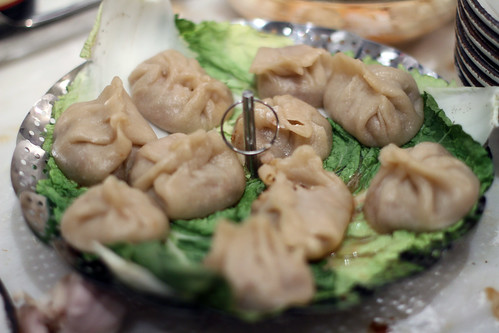



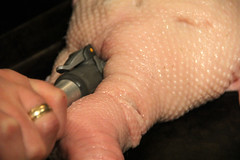
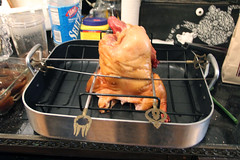


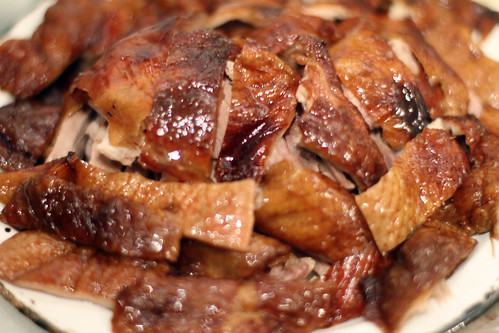
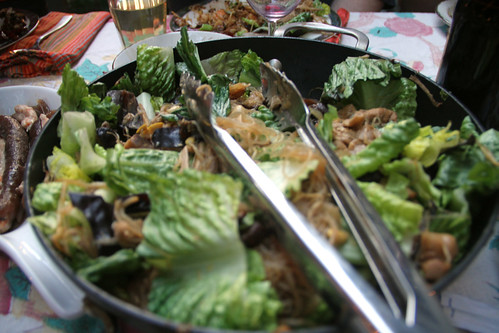

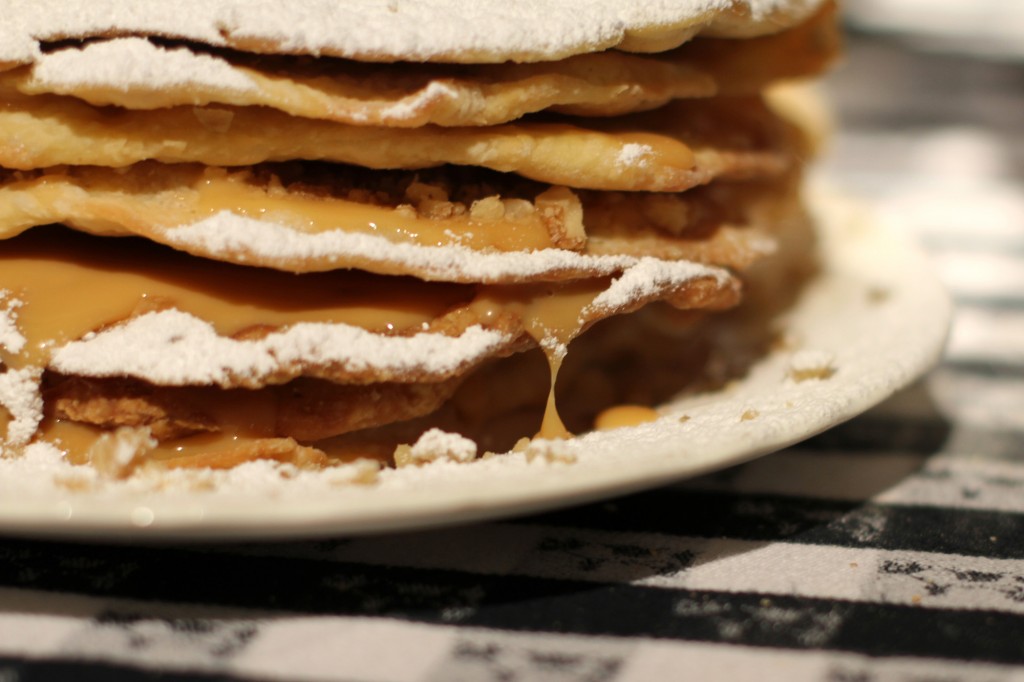
 photo by Kirsty Bennett
photo by Kirsty Bennett